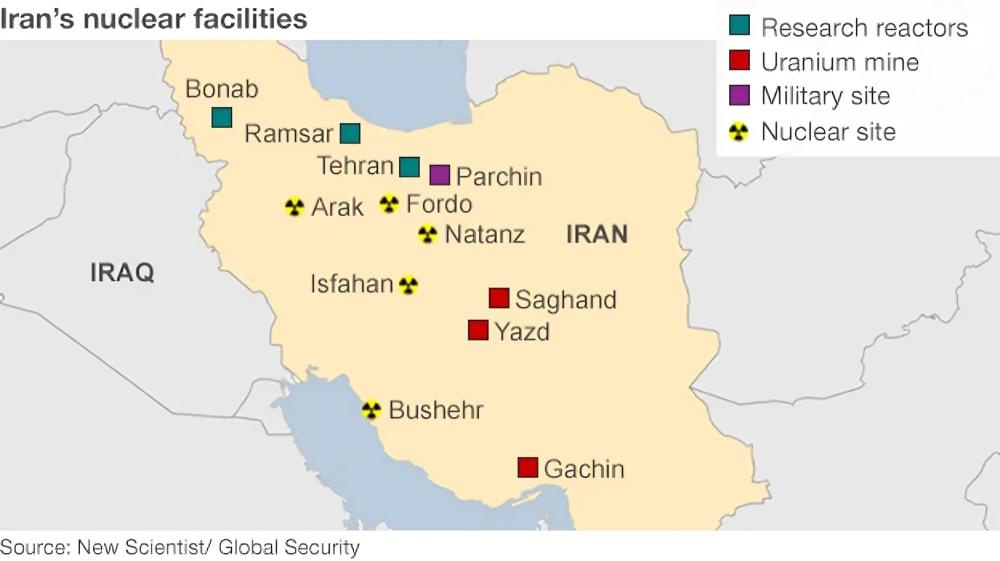Implications of Iran’s nuclear ambitions How to reach a peace with a nuclear bomb?
Recently, Western intelligence reports revealed that Iran has begun enriching uranium close to weapons-grade levels, sending Tehran closer to becoming a nuclear power. According to the International Atomic Energy Agency (IAEA), Iran had produced uranium particles that were enriched up to 83.7% purity at its Fordo fuel enrichment plant south of Tehran. As such, in a separate statement, U.S. allies France, Germany and the United Kingdom issued a stark warning over Iran's nuclear activities.
Moreover, the IAEA confirms that, since the end of November 2023, the rate at which Iran has been producing uranium enriched up to 60% U-235 at these two facilities combined has increased to approximately 9 kg per month.
By the IAEA's theoretical definition, around 42 kilograms of uranium enriched to 60% is the amount at which making a nuclear bomb with it cannot be excluded. Iran already has enough uranium enriched to up to 60%, if enriched further, to make three nuclear bombs. Uranium enriched at 60% purity is just a short, technical step away from weapons-grade levels of 90%.

Iran’s nuclear escalation is all the more concerning at a time when Iran-backed proxies continue their dangerous and destabilizing activities in the region, including the recent deadly drone attack and other attempted attacks in Iraq and Syria and the Houthi attacks against commercial shipping vessels in the Red Sea.
Although in early 2023, Iran refuted all reports regarding the uranium enrichment, later it acknowledged the fact referring to its "sovereign right". Moreover, the Iranian authorities indicate that 60% of the enrichment has been implemented to the peaceful needs of the country and under international supervision.
However, the Western partners stated that the production of high-enriched uranium by Iran has no credible civilian justification and represents reckless behaviour in a tense regional context.
For many years, the Islamic regime in Iran sought to acquire nuclear weapons as an effective deterrence force against Israel and its Western allies. However, nuclear ambitions came with a bitter price as international pressure on Iran has grown significantly.

Additional sanctions imposed on Iran empowered its proxy warfare strategy in the Middle East against Gulf monarchies and Israel. In this regard, the recent Israel-Hamas war in the Gaza Strip may be attributed to Iran’s broader hybrid strategy.
Iranian-backed Hamas militant organization launched an unprecedented attack against Israel, firing dozens of missiles on urban areas and settlements.
Moreover, since the start of Israel's offensive against Gaza's ruling Hamas militants, Iran-backed proxies have increased their attacks on shipping in the Red Sea and on U.S. troops in Iraq and Syria, sharply increasing tensions in the region. In response, the Israeli army launched a mass counter-offensive in Gaza in an effort to demilitarize the Gaza Strip and eradicate Hamas.
Unsurprisingly, Israel blamed Iran for this attack and attempted to "destroy the state of Israel." Tel Aviv, Iran's arch-foe, is the only stronghold in the Middle East confronting Iran's proxy network and its nuclear program.
For example, in 2020, Iran’s counter-intelligence agencies were challenged by the assassination of Mohsen Fakhrizadeh, the country’s top physicist and the leader of its nuclear program. Iranian officials have described the assassination as an attempt to sabotage Iran’s nuclear energy ambitions.

Iran’s domestic security problems also stem from the lack of protective protocols for scientists, engineers, and technicians associated with its defence programs. This may be attributed to the many people employed in such positions, complicating efforts to keep them all safe.
Iran and Israel have long been engaged in a covert war, which has recently included assassination operations on Iranian soil. As such, 2020 and 2021 years were marked with mysterious explosions in Iran's nuclear and military facilities, such as Parchim and Natanz.
The first recent major explosion occurred on June 25, 2020, and targeted the military complex of Parchin, southeast of Tehran. The Parchim explosion was followed by another deadly explosion in the Natanz uranium enrichment facility on July 2, 2020, where advanced centrifuges were being assembled.
Iran’s nuclear program and attempts at uranium enrichment will further deteriorate strained relations with the West and Israel, including neighbouring Arab countries. The current Islamic regime's radical narrative and agenda is considered a real threat to the fragile stability in the Gulf region, particularly amid the ongoing Israel-Hamas war.








